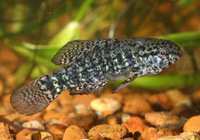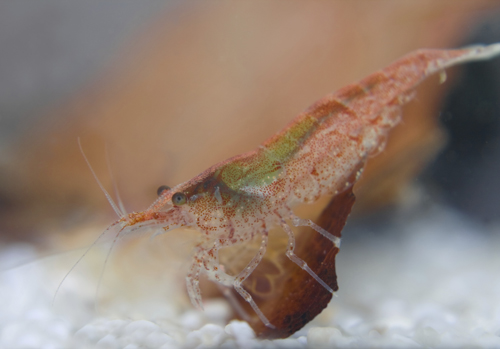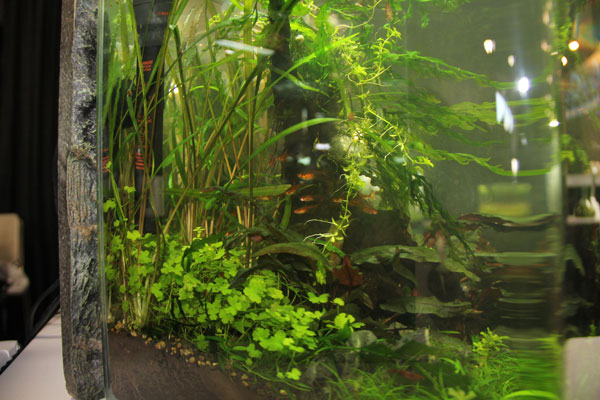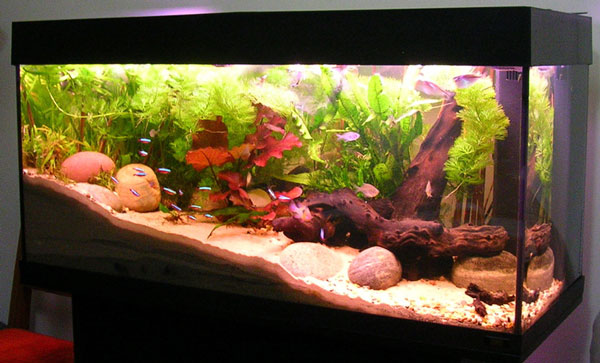
Q. Is there any rule that governs freshwater fishkeeping, regarding how many freshwater fish can be kept in the aquarium? I have heard the 1-gallon-per-inch-of–fish rule and many rules like that. Some are more liberal than others and some fishkeepers don’t even follow these rules. Is there a rule that is actually correct and proven to work?
Suzanne Zimmerman
Chevy Chase, Maryland
A. I would probably have to group myself in the category of the aquarists that don’t follow any of the rules like the one that you described. I have heard the 1-gallon-per-inch-of-fish rule as well as others, some that even apply to the marine side of the hobby. Personally I would write nearly all of them off. The truth of the matter is that an aquarium is basically a captive ecosystem full of individuals. No two tropical fish, even members of the exact species, act the same and therefore no “general rule” can attest to every individual and every scenario an aquarist will encounter. I do realize that many of these rules are simple stocking guidelines, though even when used in this capacity they are usually inaccurate.
Tropical fish, like any other animal, will grow at different rates, consume different amounts of aquarium fish food, behave with their tankmates differently and also display different levels of aggression. Depending on their metabolic processes, fish will even release a different amount of waste. The worst rule in the book is the one-fish-per-3-gallon rule. This rule, which sadly is still uttered today in many a tropical fish shop, can easily be proven wrong. A 3-gallon aquarium would obviously be too small for a common oscar, though according to the rule it would suffice.
As for stocking a freshwater aquarium, I would always recommend erring on the side of conservatism. A light or moderately stocked aquariums will be easier to maintain and manage over one that is heavily stocked. Also, lightly stocked tropical fish aquariums fare much better in emergencies, (such as power outages) than one that is filled to the brim with livestock.
Instead of looking for a golden rule when stocking your aquarium, I recommend this: First look for fish species that are compatible or have been compatible in other people’s experience. Look for tropical fish species that do not grow too large and are recommended for your aquarium’s size in gallons. Aquascape your aquarium to provide plenty of hiding places and retreats in the event that one fish is more aggressive than you predicted. If the tropical fish you have added seem to be getting along well and you’re not having a problem with excessive nutrients in the water you can look at adding more fish that are compatible with your current species. A balanced and frequent water change regime and proper nutrition for the animals you are keeping, will all aid in your success.
Once you have established some harmony in the aquarium you can begin to research both other tropical fish and invertebrate species that may work well in your aquarium. Remember though, fish compatibility is not all that needs to be taken into account. If you are keeping live aquatic plants or another type of freshwater animal that may be a prey item or prey on the tropical fish that needs to be factored in as well. I have found, at least from my experience, attention to detail and research into what animals are being kept works better than any one general rule.
 Pygmy Sunfish
With this installment of Conservation Corner, I thought Id t
Pygmy Sunfish
With this installment of Conservation Corner, I thought Id t
 Setting Up a Freshwater Shrimp Tank
Shrimps are interesting aquatic animals that can be raised a
Setting Up a Freshwater Shrimp Tank
Shrimps are interesting aquatic animals that can be raised a
 Hiding Fish
A common complaint, especially with new hobbyists, is, &
Hiding Fish
A common complaint, especially with new hobbyists, is, &
 Innovations in the Aquarium Hobby
Fishkeeping has experienced a lot of progress throughout the
Innovations in the Aquarium Hobby
Fishkeeping has experienced a lot of progress throughout the
 Freshwater Aquarium Beginners Guide
Aquariums are beautiful additions to virtually any living ar
Freshwater Aquarium Beginners Guide
Aquariums are beautiful additions to virtually any living ar
Copyright © 2005-2016 Pet Information All Rights Reserved
Contact us: www162date@outlook.com